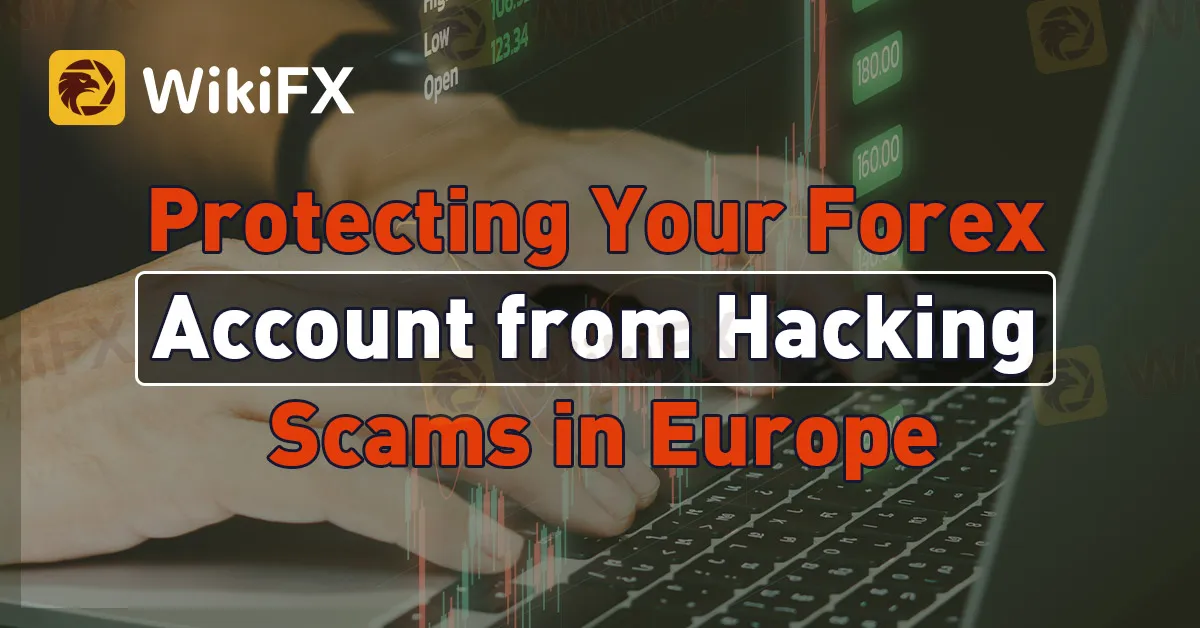简体中文
繁體中文
English
Pусский
日本語
ภาษาไทย
Tiếng Việt
Bahasa Indonesia
Español
हिन्दी
Filippiiniläinen
Français
Deutsch
Português
Türkçe
한국어
العربية
Protecting Your Forex Account from Hacking Scams in Europe
Abstract:With the increasing digitization of the forex market, the risk of account hacking scams has also risen. Hackers employ various techniques to gain unauthorized access to traders' accounts, leading to significant financial losses. In this article, we will discuss essential tips to protect your forex account from hacking scams in Europe.

With the increasing digitization of the forex market, the risk of account hacking scams has also risen. Hackers employ various techniques to gain unauthorized access to traders' accounts, leading to significant financial losses. In this article, we will discuss essential tips to protect your forex account from hacking scams in Europe.
Strong Passwords and Two-Factor Authentication:
Create a strong, unique password for your forex account. Avoid using easily guessable information or common passwords. Additionally, enable two-factor authentication (2FA) whenever possible to provide an extra layer of security.
Be Wary of Phishing Attempts:
Phishing is a common tactic used by hackers to trick individuals into revealing their account credentials. Be cautious of emails, messages, or websites that appear suspicious or ask for personal information. Always verify the authenticity of the source before providing any sensitive details.
Secure Internet Connections:
When accessing your forex account, use secure and trusted internet connections. Avoid logging in from public Wi-Fi networks or unsecured connections, as they can be easily compromised by hackers.
Regularly Monitor and Update:
Regularly monitor your forex account for any unauthorized activity. Keep your trading platform and antivirus software up to date to protect against potential vulnerabilities. Be proactive in implementing security measures to minimize the risk of hacking.
Conclusion:
Protecting your forex account from hacking scams requires a proactive approach to security. By following these tips, such as using strong passwords, enabling two-factor authentication, and being cautious of phishing attempts, you can significantly reduce the risk of falling victim to hacking scams. For additional resources and information on account security, visit WikiFX at www.wikifx.com. They provide valuable insights and tools to help traders safeguard their accounts and investments.

Disclaimer:
The views in this article only represent the author's personal views, and do not constitute investment advice on this platform. This platform does not guarantee the accuracy, completeness and timeliness of the information in the article, and will not be liable for any loss caused by the use of or reliance on the information in the article.
Read more

MT4 and MT5 Platforms - Helping Traders Up Their Forex Trading Game
Developed by MetaQuotes Software Corp, MetaTrader 4 and MetaTrader 5 apps come integrated with a wide range of tools that enable seamless forex investments. Learn more about their utilities.

Forex Trading Lot Size: Decide it Right to Reap the Right Results
Determining the right forex trading lot size is pivotal to enjoying a long run in the forex market. Go through this guide to know how to do it.

The Shame of Being Scammed: Don't Ever Stay Silent
It often starts with a promise of fast profits, low risk, and a slick-looking platform that seems too good to ignore. Before long, your savings are gone, the website vanishes, and so does the person who convinced you to invest. What’s worse? You never tell a soul. Every year, countless people fall into the trap of fraudulent investment schemes, yet most never speak up. Why? And what does this silence mean for the rest of us?

Google Issues Stark Warning: Cybercrime Losses to Hit $13.8 Trillion by 2028
Cybercrime is a new-age problem in the digital world. As we move further into the internet era, new internet-related challenges are emerging—cybercrime being one of the most serious among them.
WikiFX Broker
Latest News
CFD Brokers Face Dual Compliance Pressures Ahead of 2026: Australia and EU Tighten Rules
Services Surveys Signal 'Expansion' In June, Inflation Fears Remain High
Major Risks Associated with AuxiliumFX: You Need to Know
ASIC cancels AFS licences of Ipraxis and Downunder Insurance Services
CFI Financial Group Becomes Official Online Trading Partner of Etihad Arena
FxPro to Launch Crypto Trading Desk, Deepening Digital Asset Push
Global Brokers Vs. Indian Rules: Why They Struggle in India
Discover 5 Benefits of Trading with Trive FX Broker
Indian regulator bars U.S. firm Jane Street from accessing securities market, impounds $566 million in manipulation probe
Asia-Pacific markets trade mixed ahead of Trump's deadline for higher tariffs
Currency Calculator


